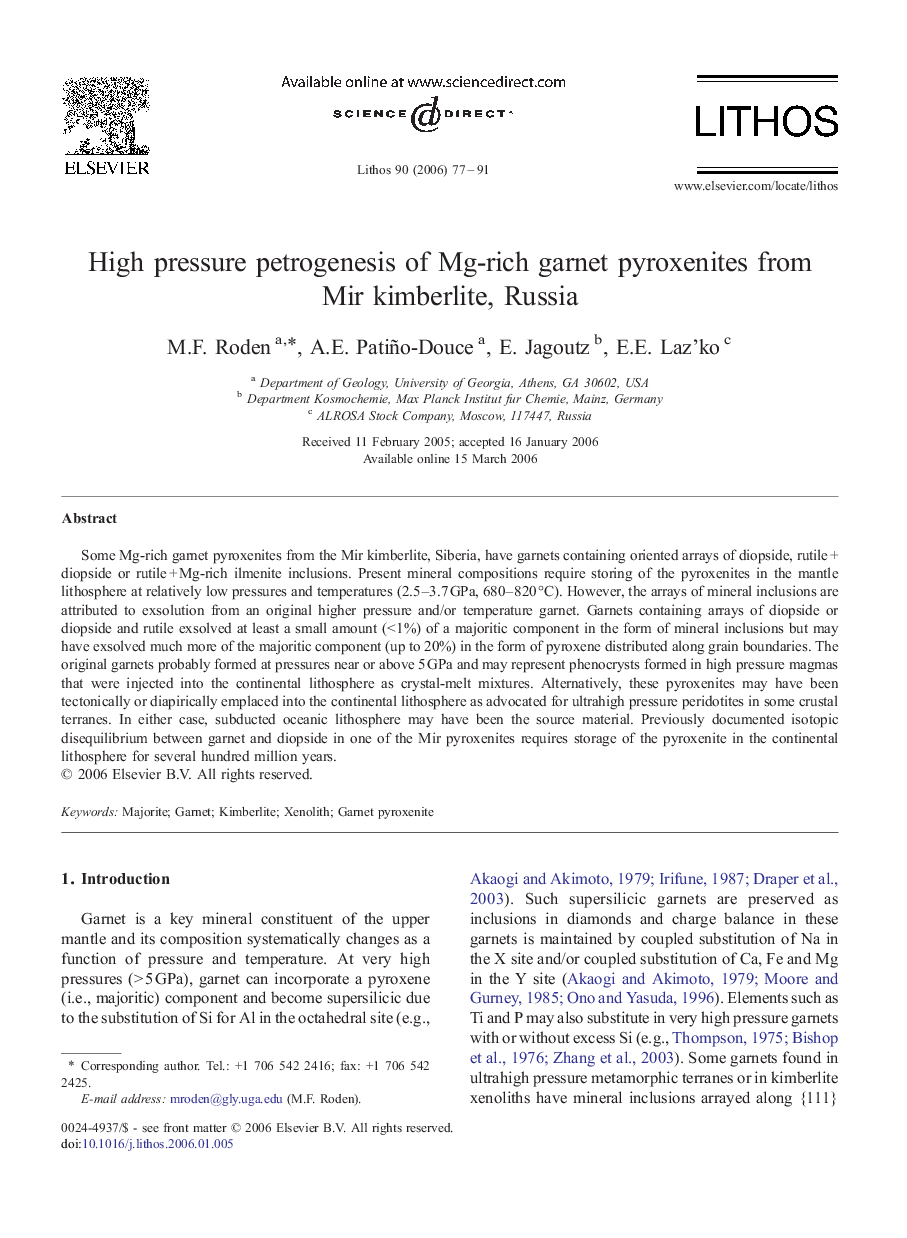| Article ID | Journal | Published Year | Pages | File Type |
|---|---|---|---|---|
| 4718034 | Lithos | 2006 | 15 Pages |
Some Mg-rich garnet pyroxenites from the Mir kimberlite, Siberia, have garnets containing oriented arrays of diopside, rutile + diopside or rutile + Mg-rich ilmenite inclusions. Present mineral compositions require storing of the pyroxenites in the mantle lithosphere at relatively low pressures and temperatures (2.5–3.7 GPa, 680–820 °C). However, the arrays of mineral inclusions are attributed to exsolution from an original higher pressure and/or temperature garnet. Garnets containing arrays of diopside or diopside and rutile exsolved at least a small amount (< 1%) of a majoritic component in the form of mineral inclusions but may have exsolved much more of the majoritic component (up to 20%) in the form of pyroxene distributed along grain boundaries. The original garnets probably formed at pressures near or above 5 GPa and may represent phenocrysts formed in high pressure magmas that were injected into the continental lithosphere as crystal-melt mixtures. Alternatively, these pyroxenites may have been tectonically or diapirically emplaced into the continental lithosphere as advocated for ultrahigh pressure peridotites in some crustal terranes. In either case, subducted oceanic lithosphere may have been the source material. Previously documented isotopic disequilibrium between garnet and diopside in one of the Mir pyroxenites requires storage of the pyroxenite in the continental lithosphere for several hundred million years.
